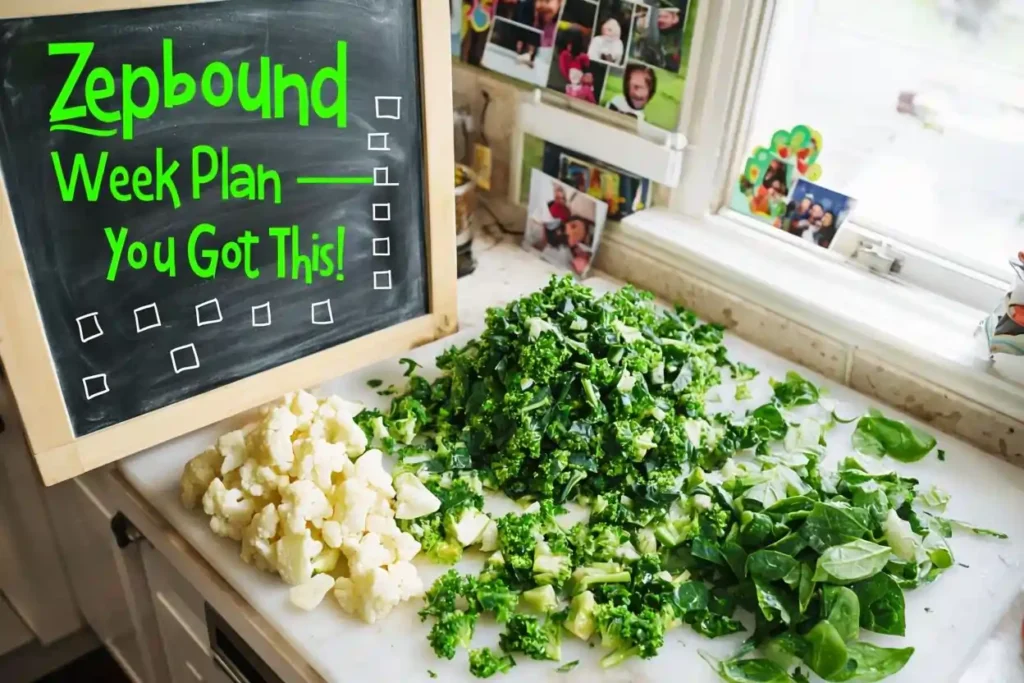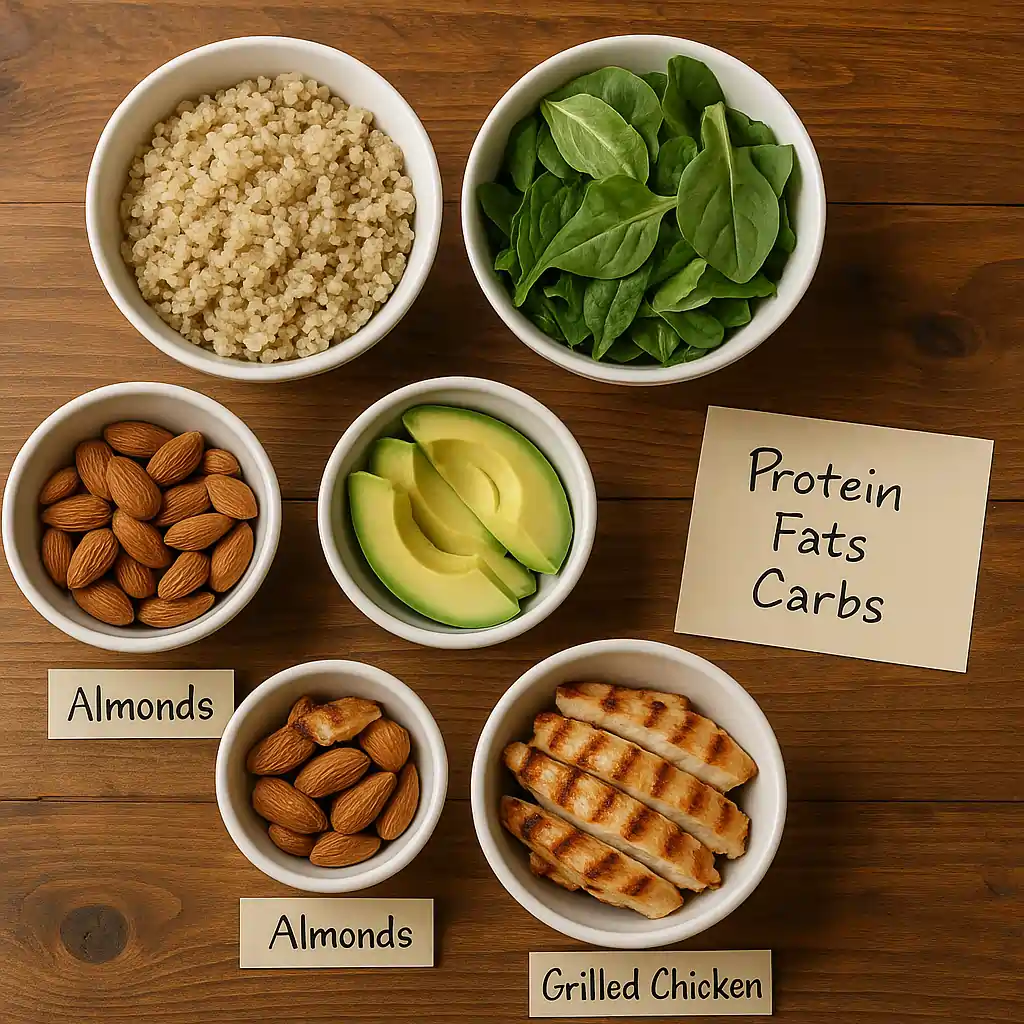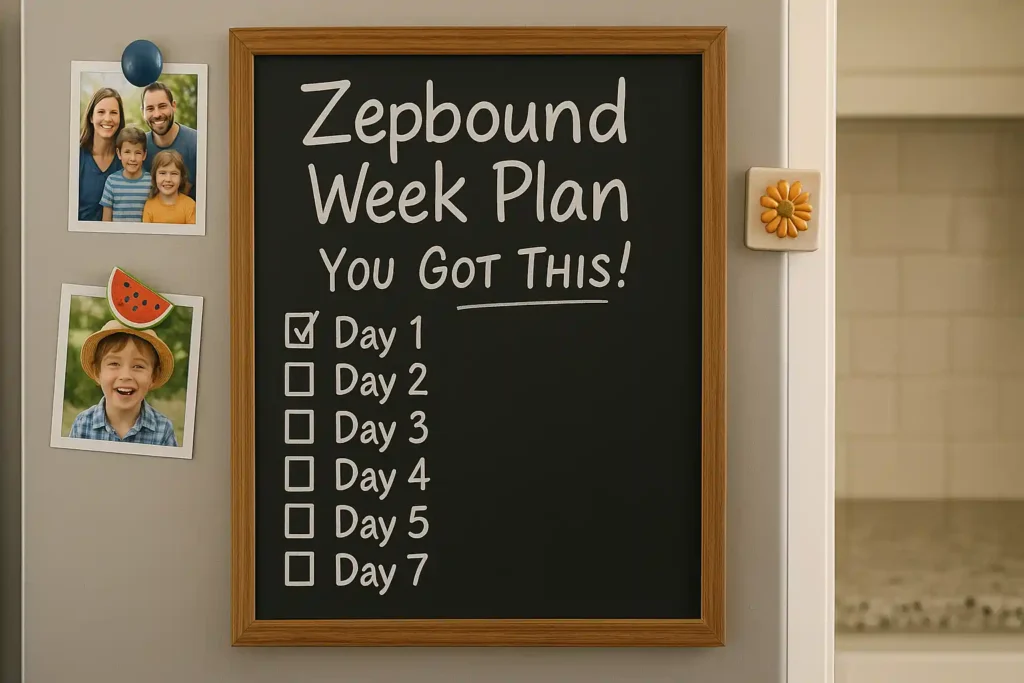For those on the Zepbound regimen, adhering to a set meal plan is essential. The nutrients required to promote general health and wellbeing are found in a well-balanced diet.
With a clear outline of what to eat for breakfast, lunch, and dinner, a seven-day meal plan can make healthy eating easier. The purpose of this meal plan is to assist people in reaching their health objectives.

Table of Contents
Table of Contents
Understanding Zepbound and Nutritional Needs
Knowing how Zepbound affects our nutritional requirements is crucial as I investigate the idea. Zepbound is becoming more well-known for its possible advantages, but in order to get the most out of it, it’s important to understand how it affects our diet.
What is Zepbound and How it Affects Appetite
Zepbound is a concept that influences appetite and eating habits. By understanding how Zepbound works, individuals can better manage their nutritional intake. Incorporating a zepbound drink recipe into one’s diet may be part of this process, potentially aiding in appetite regulation.
Key Nutrients to Include in Your Meals

A well-rounded Zepbound meal plan should include a variety of essential nutrients. Key components include protein, healthy fats, and complex carbohydrates. The following table highlights important nutrients and their food sources:
| Nutrient | Food Sources |
|---|---|
| Protein | Lean meats, fish, eggs, legumes |
| Healthy Fats | Nuts, seeds, avocados, olive oil |
| Complex Carbohydrates | Whole grains, fruits, vegetables |
My Complete 7-Day Zepbound Meal Plan

In this section, I’ll outline my complete 7-Day Zepbound Meal Plan, designed to nourish your body and support your health goals. This meal plan includes a variety of natural Zepbound recipes to keep your diet interesting and tailored to the Zepbound regimen.
Day 1: Gentle Start
Starting with a gentle approach, Day 1 focuses on introducing nutrient-rich foods that are easy to digest.
Protein-Rich Breakfast
Begin with a protein-rich breakfast, such as Greek yogurt with nuts and berries.
Fiber-Focused Lunch
For lunch, opt for a fiber-focused meal like a quinoa salad with roasted vegetables.
Balanced Dinner
Dinner should be a balanced mix of lean protein, healthy fats, and complex carbohydrates, such as grilled chicken with sweet potato and green beans.
Day 2: Boosting Nutrients
On Day 2, we boost the nutrient intake with whole grains, a variety of vegetables, and lean proteins.
Whole Grain Breakfast
Start with a whole grain breakfast, like oatmeal with banana and almond butter.
Vegetable-Forward Lunch
Lunch should be vegetable-forward, such as a large salad with mixed greens, cherry tomatoes, and avocado.
Lean Protein Dinner
Dinner focuses on lean protein, like grilled salmon with roasted asparagus and quinoa.
Day 3: Midweek Energy
By Day 3, the meal plan aims to provide a midweek energy boost with fruits, yogurt, and hearty salads.
Fruit and Yogurt Breakfast
Begin the day with a fruit and yogurt parfait, layered with granola.
Hearty Salad Lunch
Lunch is a hearty salad with mixed greens, grilled chicken, and a variety of vegetables.
Mediterranean Dinner
Dinner is Mediterranean-inspired, featuring grilled lamb or chicken with roasted vegetables and couscous.
| Day | Breakfast | Lunch | Dinner |
|---|---|---|---|
| 1 | Protein-Rich | Fiber-Focused | Balanced |
| 2 | Whole Grain | Vegetable-Forward | Lean Protein |
| 3 | Fruit and Yogurt | Hearty Salad | Mediterranean |
Day 4: Staying Hydrated
Day 4 emphasizes staying hydrated with smoothies, soups, and fish-based dinners.
Smoothie Breakfast
Start with a hydrating smoothie made with fruits, yogurt, and spinach.
Soup and Sandwich Lunch
Lunch includes a nourishing soup with a side sandwich or salad.
Fish-Based Dinner
Dinner is fish-based, such as baked cod with a side of steamed broccoli and quinoa.
Day 5: Anti-Inflammatory Focus
On Day 5, the focus shifts to anti-inflammatory foods with avocado toast, grain bowls, and plant-based dinners.
Avocado Toast Breakfast
Begin with avocado toast on whole grain bread with a fried egg.
Grain Bowl Lunch
Lunch is a grain bowl with quinoa, roasted vegetables, and a citrus vinaigrette.
Plant-Based Dinner
Dinner is plant-based, featuring a variety of roasted vegetables with chickpeas and brown rice.
Day 6: Weekend Satisfaction
Day 6 is designed for weekend satisfaction with egg-based breakfasts, wraps or sandwiches for lunch, and comfort food dinners made healthier.
Egg-Based Breakfast
Start with an egg-based breakfast, such as scrambled eggs with spinach and whole grain toast.
Wrap or Sandwich Lunch
Lunch is a satisfying wrap or sandwich with lean protein and plenty of vegetables.
Comfort Food Dinner (Healthified)
Dinner is a healthified version of comfort food, such as baked chicken parmesan with zucchini noodles.
Day 7: Completing the Week
On the final day, the meal plan includes pancake or waffle breakfasts, leftover remixes for lunch, and a balanced Sunday dinner.
Pancake or Waffle Breakfast
Enjoy a pancake or waffle breakfast made with whole grain flour and topped with fresh fruits.
Leftover Remix Lunch
Lunch is a creative remix of leftovers from the week’s meals.
Balanced Sunday Dinner
Dinner is a balanced meal to round out the week, such as roasted chicken with roasted potatoes and green beans.
Following this 7-Day Zepbound Meal Plan can help you stay on track with your nutritional goals and support your overall health and well-being. Incorporating a variety of natural Zepbound recipes ensures that your diet remains interesting and beneficial.
Making the Most of Your Natural Zepbound Journey
As we conclude this 7-Day Natural Zepbound Meal Plan, it’s essential to remember that sticking to the meal plan is crucial for optimal results. By incorporating the right balance of nutrients and staying hydrated, you can maximize the benefits of your Zepbound journey.
My experience with the Zepbound meal plan has shown that a well-planned approach can lead to significant improvements in overall health and well-being. By following this meal plan, you can expect to see positive changes in your energy levels and appetite management.
To continue making the most of your Zepbound meal plan, focus on maintaining a balanced diet and staying committed to your nutritional goals. With the right mindset and meal planning strategy, you can achieve a healthier and more balanced lifestyle.
FAQ
What is Zepbound and how does it work?
Zepbound is a medication that helps with weight management by affecting appetite and nutrition. It is designed to be used in conjunction with a healthy diet and regular exercise.
What are some natural Zepbound recipes I can try?
Some natural Zepbound recipes include smoothie bowls, salads with lean protein, and roasted vegetable dishes. You can also try making a zepbound drink recipe using ingredients like green tea, lemon, and ginger.
How do I incorporate key nutrients into my Zepbound meal plan?
To incorporate key nutrients into your Zepbound meal plan, focus on whole foods like fruits, vegetables, whole grains, lean proteins, and healthy fats. You can also consider meal prepping and planning your meals in advance.
Can I customize the 7-Day Zepbound Meal Plan to suit my dietary needs?
Yes, you can customize the 7-Day Zepbound Meal Plan to suit your dietary needs by swapping out ingredients and adjusting portion sizes. Be sure to consult with a healthcare professional or registered dietitian for personalized guidance.
Are there any specific foods I should avoid while following the Zepbound regimen?
While following the Zepbound regimen, it’s a good idea to limit or avoid foods that are high in sugar, salt, and unhealthy fats. Focus on whole, nutrient-dense foods instead.
How can I stay hydrated while following the Zepbound meal plan?
To stay hydrated, drink plenty of water throughout the day, and consider incorporating hydrating foods like watermelon and cucumbers into your meals. You can also try making a refreshing zepbound drink recipe using herbal tea or infused water.
